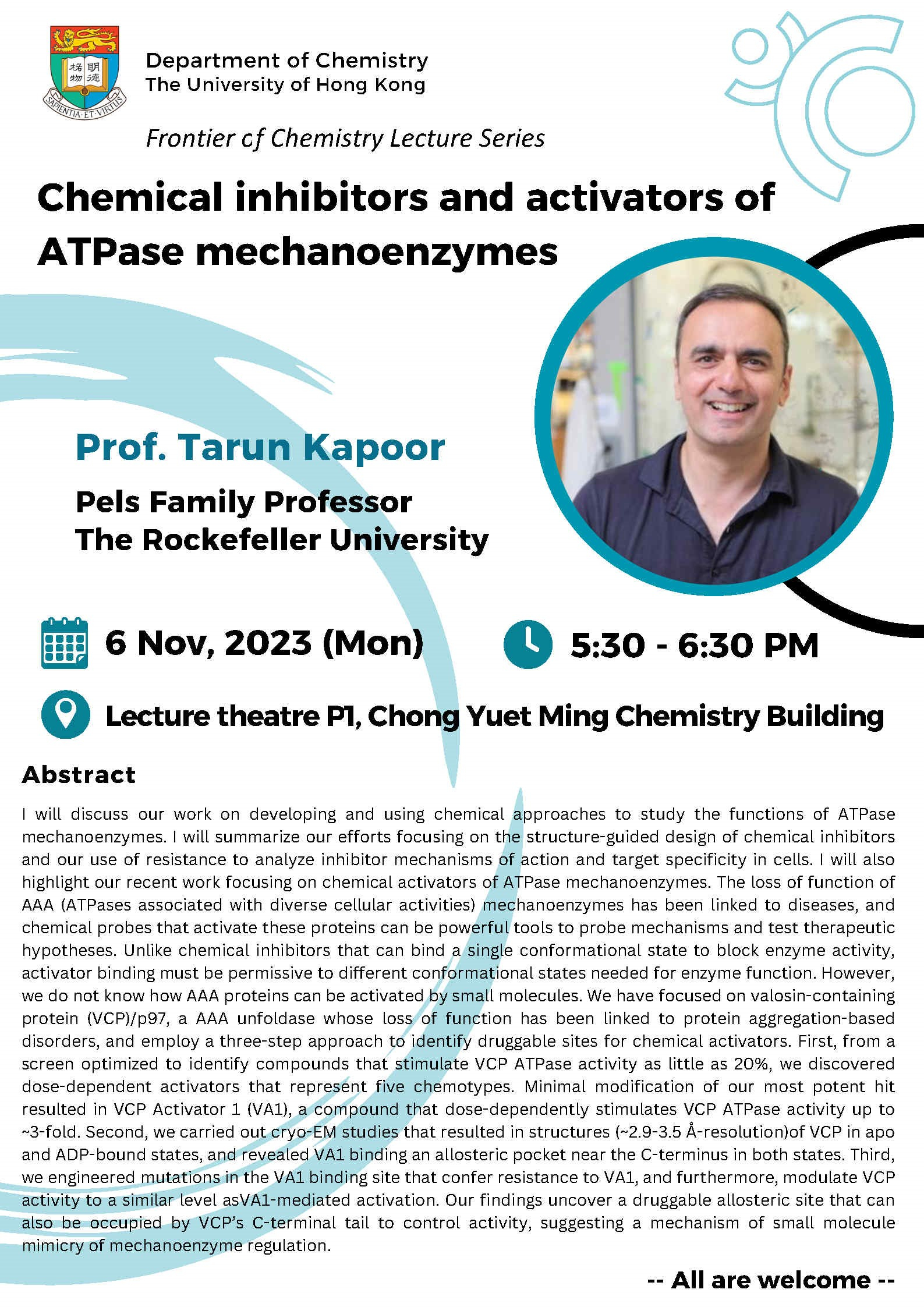| Date | 06 Nov 2023 |
| Time | 5:30 - 6:30 PM (HKT) |
| Venue | Lecture theatre P1, Chong Yuet Ming Chemistry Building |
| Speaker | Prof. Tarun Kapoor |
| Institution | Pels Family Professor, The Rockefeller University |
 Title:
Title:
Chemical inhibitors and activators of ATPase mechanoenzymes
Schedule:
Date: 6th November, 2023 (Monday)
Time: 5:30 - 6:30 pm (HKT)
Venue: Lecture Theatre P1, Chong Yuet Ming Chemistry Building
Speaker:
Prof. Tarun Kapoor
Pels Family Professor
The Rockefeller University
Abstract:
I will discuss our work on developing and using chemical approaches to study the functions of ATPase mechanoenzymes. I will summarize our efforts focusing on the structure-guided design of chemical inhibitors and our use of resistance to analyze inhibitor mechanisms of action and target specificity in cells. I will also highlight our recent work focusing on chemical activators of ATPase mechanoenzymes. The loss of function of AAA (ATPases associated with diverse cellular activities) mechanoenzymes has been linked to diseases, and chemical probes that activate these proteins can be powerful tools to probe mechanisms and test therapeutic hypotheses. Unlike chemical inhibitors that can bind a single conformational state to block enzyme activity, activator binding must be permissive to different conformational states needed for enzyme function. However, we do not know how AAA proteins can be activated by small molecules. We have focused on valosin-containing protein (VCP)/p97, a AAA unfoldase whose loss of function has been linked to protein aggregation-based disorders, and employ a three-step approach to identify druggable sites for chemical activators. First, from a screen optimized to identify compounds that stimulate VCP ATPase activity as little as 20%, we discovered dose-dependent activators that represent five chemotypes. Minimal modification of our most potent hit resulted in VCP Activator 1 (VA1), a compound that dose-dependently stimulates VCP ATPase activity up to ~3-fold. Second, we carried out cryo-EM studies that resulted in structures (~2.9-3.5 Å-resolution)of VCP in apo and ADP-bound states, and revealed VA1 binding an allosteric pocket near the C-terminus in both states. Third, we engineered mutations in the VA1 binding site that confer resistance to VA1, and furthermore, modulate VCP activity to a similar level asVA1-mediated activation. Our findings uncover a druggable allosteric site that can also be occupied by VCP’s C-terminal tail to control activity, suggesting a mechanism of small molecule mimicry of mechanoenzyme regulation.
- ALL ARE WELCOME -
